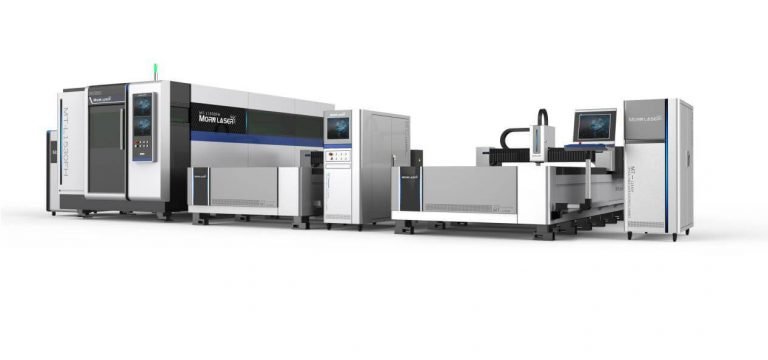Table of Contents
Laser welding machine advantages
- Speed
- Precision
- Flexibility
- Durability
- Automation
Pulsed or continuous laser?
Your laser welding machine can be equipped with one of the following two types of lasers: a pulsed laser or a continuous laser. The choice of one over the other depends on the thickness of the material you want to weld.
- The pulsed laser:
- It is suitable for metals that are light and thin.
- It prevents them from being deformed or melted.
- This type of pulsed laser is mainly used to weld sheet metal, razor blades, gold jewelry chain links and titanium pacemakers.
- The continuous laser:
- It is recommended for welding thick parts.
- It is particularly effective on refractory metals.
- It can pose problems if it is used on metal or a part that is too thin. In these cases the laser could damage, deform or melt the part.
- It is more expensive than a pulsed laser, but it also reduces operating costs.
How to choose the laser beam source?
There are three types of sources: fiber laser, CO2 laser and Nd:YAG laser. The choice of source depends on the type of laser you have chosen (pulsed or continuous).
- The fiber laser:
- This technology is based on sharp and thin beams that allow continuous and penetrative work to be carried out.
- Like the CO2 laser, the fiber laser can penetrate thick sheets with great speed and efficiency.
- It is easier to integrate into a machine than other lasers both in terms of use and maintenance.
- This laser offers an average efficiency of 25%.
- The CO2 laser:
- This technology uses a gas mixture of carbon dioxide, helium and nitrogen that is electrically-excited and optimized for continuous operation.
- Like the fiber laser, the CO2 laser can penetrate thick sheets with great speed and efficiency.
- It is more effective at penetrating thick steel parts than the fiber laser so it is more widely used.
- It is more flexible and can penetrate thicker and lighter materials than the fiber laser.
- This laser offers an average efficiency of 7% for 8,000 W.
- TheNd:YAG laser:
- It allows effective control of the power, duration and shape of the laser pulses.
- It is optimized for pulsed mode.
- But it emits pulses of very different wavelengths that do not all reach their target and then dissipate in the form of heat.
- This type of laser is less energy efficient (3 to 4% efficiency) than CO2 lasers (7 to 10%) and fiber lasers (25 to 30%).
What parameters should be checked?
Before using your laser welding machine, you will need to verify several parameters. Here are some common precautions to take to ensure that your welding operations are a success.
- Adjust energy
- It is important to adjust the energy appropriately in order to adapt the power to the process.
- This will prevent energy waste.
- Ensure that you have the correct beam diameter
- The diameter affects the welding performance.
- We recommend that you choose a laser beam with a diameter between 0.2 and 2 mm.
- Check the pulse frequencies
- Pulse frequencies that are too high result in pulse energies that are too low making the welding less efficient or even inefficient.
- Monitor the waveform of laser pulses
- We recommend that you change the waveform according to the metal you intend to weld.
- If you use an inadequate waveform, 60% to 98% of the laser energy will be lost and your welding operation will fail.
Which configuration should I choose for my welding machine?
There are 3 types of configurations available for welding machines:
- Manual configuration
- Semi-automatic configuration
- Automatic configuration
The choice of configuration depends on:
- Your production (small-scale or large?)
- How you want to arrange your workstation






